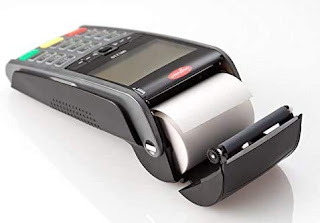Office Stationery: Enhance Productivity and Organization in the Workplace
Office stationery plays a vital
role in the smooth functioning of any workplace. It comprises a wide range of
essential supplies and materials that contribute to the efficiency,
productivity, and organization of daily tasks. From writing instruments and paper
products to office accessories and storage solutions, office stationery is a
cornerstone of every office environment. In this article, we will explore the
significance of office stationery and its impact on creating a productive and
well-organized workspace.
1. Essential Office Stationery
Items:
a. Writing Instruments: Pens,
pencils, highlighters, markers, and correction tools are indispensable for
daily note-taking, document editing, and task management.
b. Paper Products: Notepads,
sticky notes, notebooks, and memo pads provide platforms for jotting down
ideas, reminders, and important information.
c. Filing and Organization:
Folders, binders, file dividers, and document wallets help keep paperwork
organized and easily accessible.
d. Desk Accessories: Staplers,
paper clips, rulers, scissors, and tape dispensers are essential tools for
various office tasks.
e. Calendars and Planners: Wall
calendars, desk calendars, and planners aid in scheduling and time management,
ensuring deadlines are met.
f. Desk Organizers: Drawer
organizers, pen holders, and desktop caddies help maintain a clutter-free and
tidy workspace.
2. Importance of Office
Stationery:
a. Enhances Productivity: Having
the necessary office
stationery catalogue at
hand ensures employees can quickly and efficiently complete their tasks,
leading to increased productivity.
b. Promotes Organization: Proper
organization of documents and supplies facilitates easy retrieval and prevents
misplacing important files.
c. Facilitates Communication:
Sticky notes and message pads enable effective communication within the office,
allowing employees to leave messages or reminders for each other.
d. Supports Creativity and
Innovation: Notepads and sketchbooks provide employees with a space to
brainstorm ideas and foster creativity.
e. Professionalism and Branding:
High-quality and branded office stationery contribute to a professional image
and reinforce the company's branding.
3. Choosing the Right Office
Stationery:
When selecting office stationery
for your workplace, consider the following factors:
- Quality: Opt for high-quality
stationery items that are durable and reliable, ensuring they can withstand
daily use.
- Functionality: Assess the
specific needs of your office and choose stationery that best supports daily
tasks and workflows.
- Design and Aesthetics: Consider
stationery that aligns with your office's design and brand identity, creating a
cohesive and professional atmosphere.
4. Eco-Friendly Office
Stationery:
As sustainability becomes
increasingly important, many businesses are opting for eco-friendly office
stationery made from recycled materials or sustainable sources. Using
environmentally friendly stationery demonstrates a commitment to reducing the
office's environmental footprint and promotes responsible business practices.
In conclusion, office stationery
is an essential element of every workplace, contributing to productivity,
organization, and communication among employees. By providing the necessary
tools and materials, office stationery facilitates efficient daily operations,
fosters creativity, and maintains a professional and well-organized work
environment. Whether it's writing instruments, paper products, desk
accessories, or filing solutions, investing in the right office stationery is a
worthwhile investment that positively impacts the productivity and success of
any business.
For more info. visit us:




Comments
Post a Comment